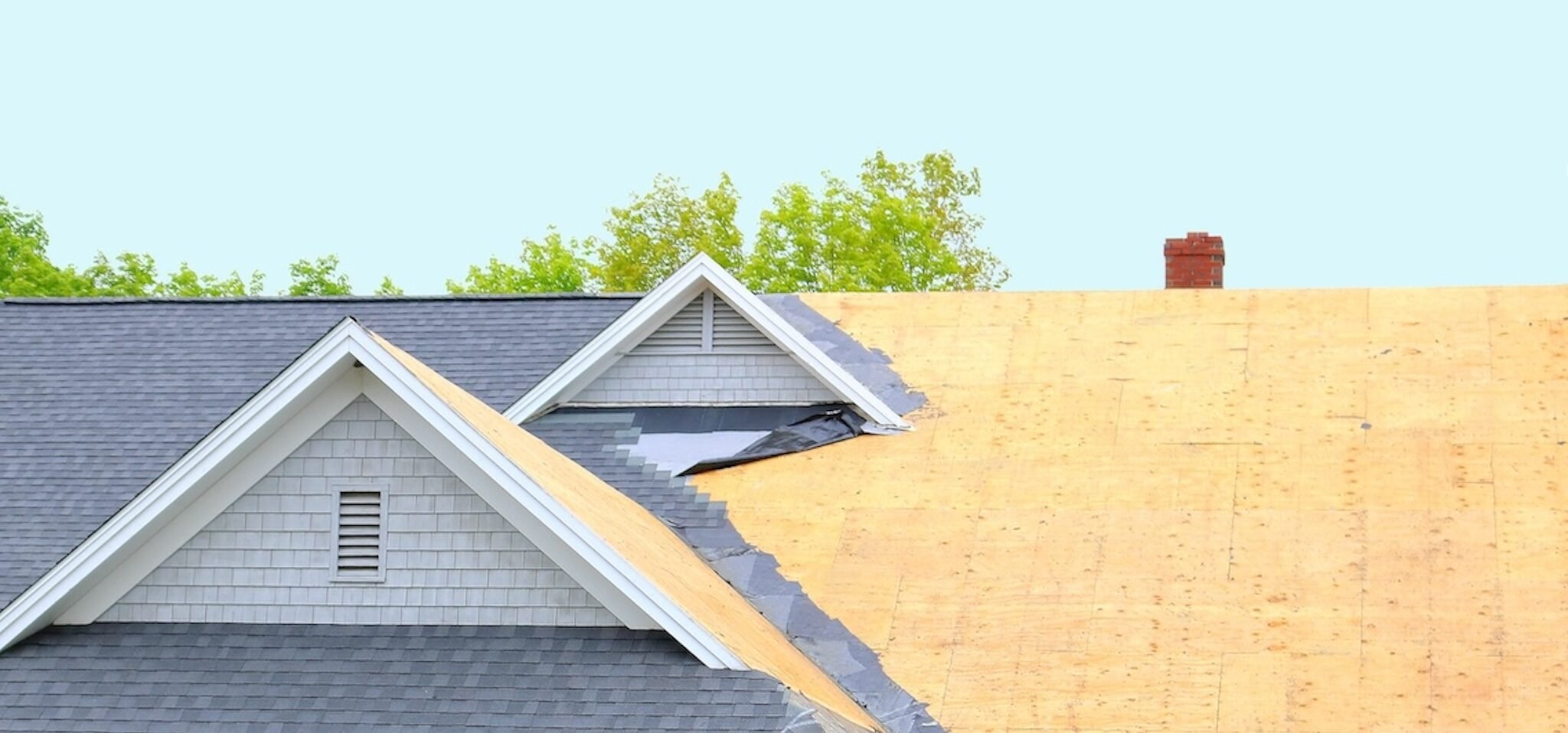
Parts of a Roof: Essential Components & Their Functions
4/14/25
6 Min Read
Understanding the parts of a roof is crucial for homeowners who want to maintain and protect their homes. A roof isn’t just about shingles and tiles; it’s a complex roofing system made up of multiple components, each serving a unique purpose. Every piece, from the roof truss to the roof decking, works together to provide your home with structural support, insulation, and protection against the elements.
This guide will walk you through:
- The essential roof components and their functions.
- How the roofing system ensures your home is weatherproof and safe.
- Key maintenance tips to prolong the lifespan of your roof frame and its parts.
By knowing the different parts of your roof, you’ll be prepared to identify potential issues early and make informed decisions about repairs and upgrades. Now, let’s explore what makes up a roof and why each part is essential to your home’s security and durability.
1. Roof Frame
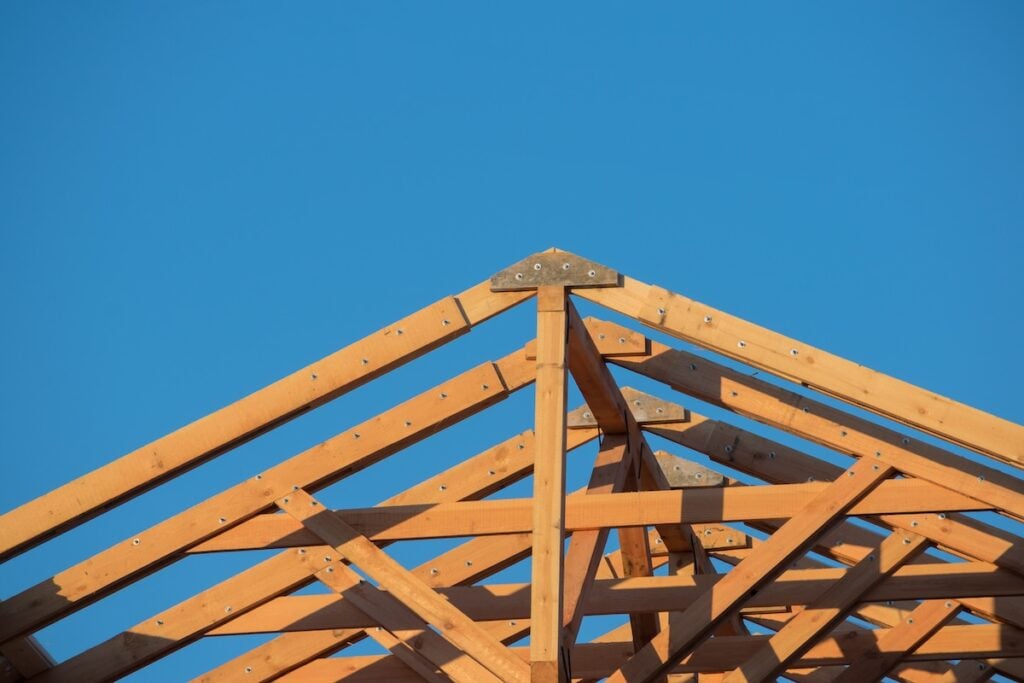
The roof frame forms the backbone of your entire roof. It provides the structural integrity needed to support the roof’s weight and withstand environmental forces like wind, rain, and snow. There are several key components within the roof frame:
Roof Truss
The roof truss is a triangular structure made of wood or metal that supports the roof. This component evenly distributes the weight of the roof across the walls of your home. Trusses also play a big role in shaping the roof and determining the slope or pitch.
- Function: Ensures your roof is structurally sound and can bear heavy loads.
- Material Options: Wood trusses are more common in residential homes, while metal trusses are often found in commercial buildings.
Rafters
Rafters are the sloped beams that run from the ridge of the roof to the edges. These components connect directly to the roof decking and provide additional support to the roof’s surface.
- Function: Reinforces the roof’s structure and supports the materials that rest on it.
- Placement: Spaced equally throughout the frame to maintain a strong foundation.
Attic Space
The attic space, located below the roof frame, is an often-overlooked part of the roofing system. It serves multiple purposes beyond just storage.
- Function: Provides insulation and ventilation to regulate your home’s temperature.
- Protects your roof by reducing moisture buildup that could lead to mold or rot.
Maintaining a well-ventilated attic space is key to prolonging the life of your roof.
2. Roof Decking
Also known as the sheathing, roof decking is the flat surface that covers the roof frame. It provides a base for the roofing materials, such as shingles or tiles, to be installed. Most residential roofs use plywood or oriented strand board (OSB) for roof decking, as these materials are lightweight yet durable.
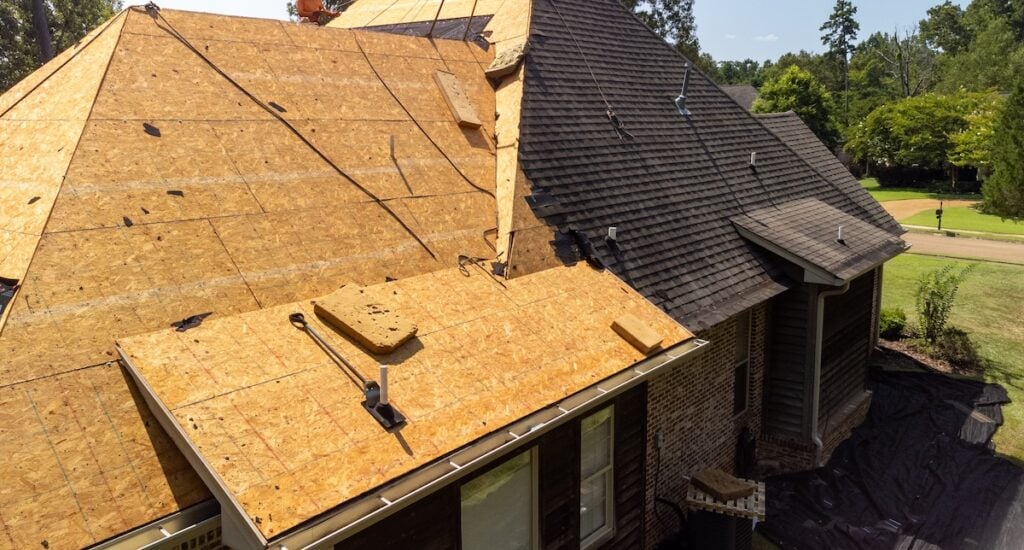
Functions of Roof Decking
- Structural Support: Provides a solid foundation for roofing materials.
- Weather Resistance: Acts as a barrier against wind and rain when paired with underlayment.
- Impact Prevention: Helps absorb the force from falling debris, protecting the roof truss and rafters.
Importance of Proper Roof Decking Installation
- Guaranteeing a professionally installed roof decking will ensure a strong foundation for the entire roofing system.
- Moisture or damage to the decking may lead to leaks and weaken the roof’s structure overall.
3. Roofing Materials and Exterior Layers
Underlayment
The underlayment is a protective barrier that sits directly on top of the roof decking. Typically made from felt or synthetic materials, it serves as the last line of defense against water intrusion.
- Function: Protects the decking from moisture.
- Adds an extra layer of insulation to reduce heat transfer.
Shingles
Shingles are the most visible roof components and come in a variety of materials, including asphalt, metal, clay, and cedar.
- Function: Shields your home from external elements like rain, UV rays, and wind.
- Enhances curb appeal.
Flashing
Roof flashing is made of metal and is installed around vulnerable areas of the roof, such as chimneys, vents, and valleys.
- Purpose: Directs water away from seams or joints to prevent leaks.
- Commonly made from aluminum or steel due to its durability.
Gutters and Downspouts
Although technically not part of the roof itself, gutters and downspouts are an essential part of your home’s roofing system.
- Function: Channels rainwater away from the foundation to prevent flooding and water damage.
- Protects the roof from water pooling near its edges.
4. Ventilation and Insulation
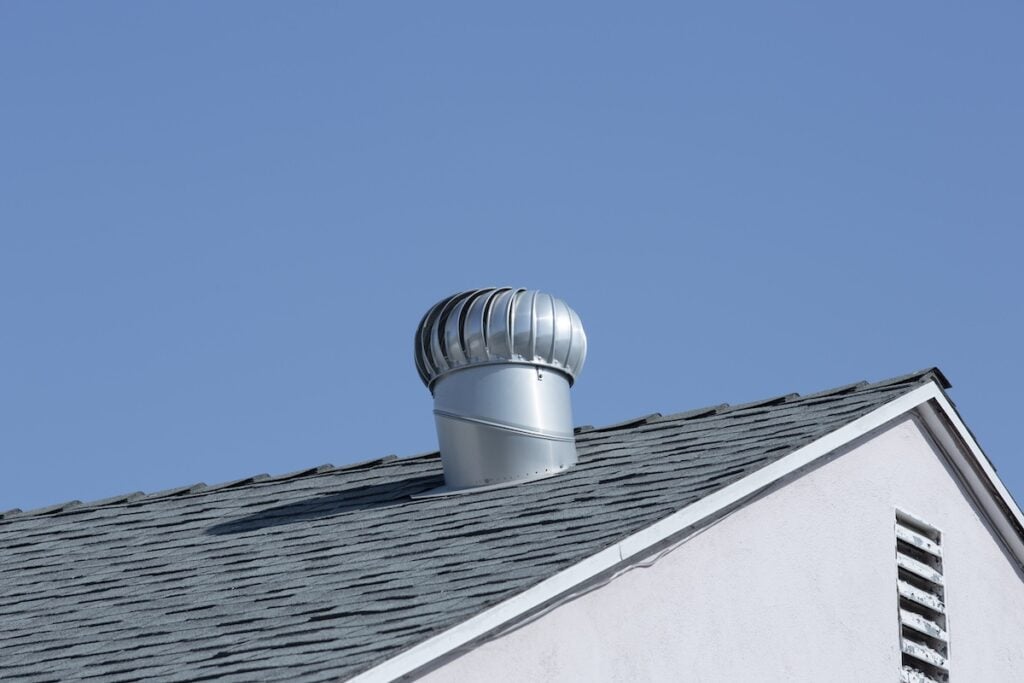
Proper roof ventilation and insulation are vital for a long-lasting, energy-efficient roof. These roof components work together to maintain proper airflow and temperature control inside your home.
Roof Vents
Roof vents allow for airflow, which prevents moisture buildup and regulates the temperature in the attic space.
- Types of Vents:
- Ridge Vents
- Soffit Vents
- Gable Vents
- Benefits: Extends the life of your roof by reducing heat and moisture buildup.
- Improves energy efficiency by keeping your home cooler in the summer and warmer in the winter.
Insulation
Insulation sits under the roof decking and within the roof frame, ensuring that your home retains its internal temperature.
- Popular Materials:
- Spray foam
- Fiberglass
- Cellulose
5. Key Roof Components in Detail
Understanding each part of your roof helps ensure proper maintenance, improved durability, and protection against water damage.
Essential Roof Components Explained
- Ridge Cap: Covers the peak where two slopes of the roof meet.
- Prevents water from seeping into the seam while allowing ventilation.
- Valley Flashing: Installed where two roof slopes intersect.
- Guides water into gutters to prevent pooling.
- Eaves and Rakes: Eaves hang over the edge to protect walls from rain.
- Rakes add a decorative finish and protect gable ends.
- Chimney and Skylight Flashing: Specialized flashing installed around chimneys and skylights to prevent leaks.
- Drip Edge: Metal strips placed along the eaves to guide water into gutters and protect the underlying wood from rot.
6. Maintenance Tips for Roof Longevity
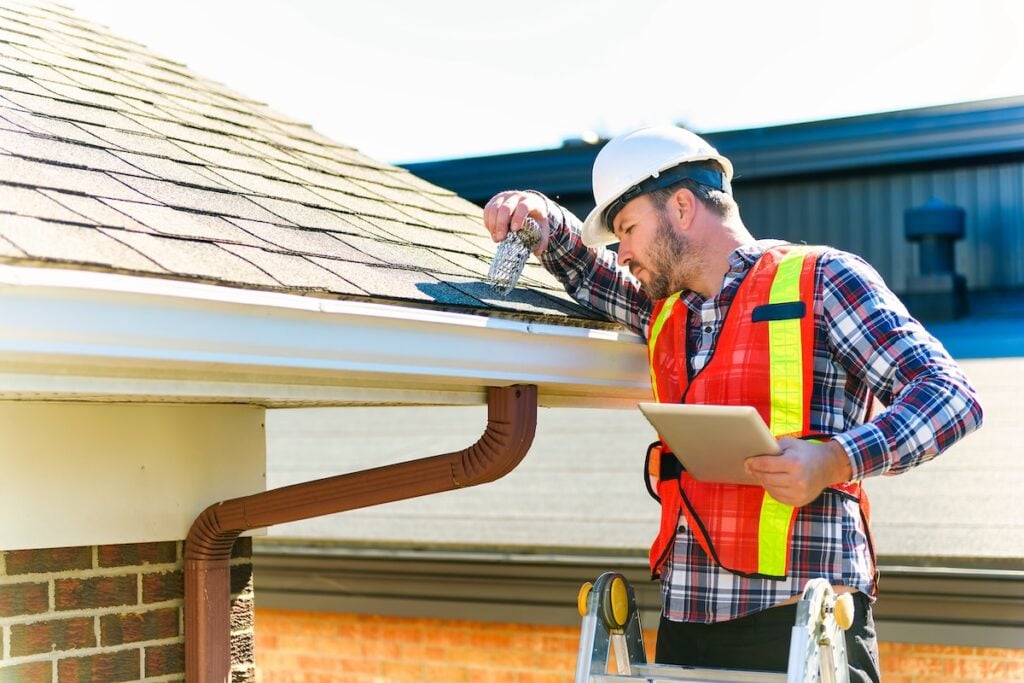
- Regularly inspect for signs of wear, such as missing shingles or damaged flashing.
- Keep gutters and downspouts clear of debris.
- Ensure proper ventilation in the attic space to prevent moisture damage.
- Schedule annual professional roof inspections to catch small issues before they become major problems.
Why Buckeye State Roofing is the Team You Can Trust
When it comes to understanding and maintaining the essential parts of a roof, you want a team with experience, expertise, and a commitment to excellence. At Buckeye State Roofing, we go above and beyond to deliver high-quality craftsmanship and reliable service for all your roofing needs. From installing sturdy roof decking to performing metal roof repairs and ensuring your roof truss system is flawless, our team handles every project with precision and care.
We know that your roof is more than just a roofing system—it’s your home’s first line of defense. That’s why we’re passionate about helping homeowners like you enjoy peace of mind, rain or shine. Contact us today!
